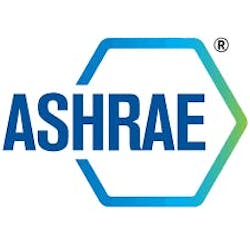ASHRAE expands decarbonization commitments
On Feb. 3, as evidence of its unwavering commitment to reducing greenhouse gas (GHG) emissions, ASHRAE announced the launch of its redesigned building decarbonization webpage and the release of the first of seven planned guides, Building Performance Standards: A Technical Resource Guide.
According to a press release, the redesigned ASHRAE Task Force For Building Decarbonization (TFBD) webpage includes technical resources, information, videos, and publications to expedite the adoption of climate change mitigation policies and reaffirms the organization’s goals as stated in the ASHRAE Vision 2020 report, approved by ASHRAE’s board of directors, as well as the ASHRAE Position Document on Building Decarbonization, to achieve net-zero GHG emissions in operation for all new buildings by 2030.
Additional features of the redesigned Building Decarbonization webpage include:
- Descriptions of seven new guidebooks focused on building decarbonization.
- A list of related outside decarbonization resources.
- A list of key decarbonization terminology.
ASHRAE TFBD chair Kent Peterson commented:
“Over the years, ASHRAE has demonstrated its leadership in reducing GHG emissions by addressing energy efficiency and sustainability, as articulated in some of our most notable technical guidance such as Standards 90.1 and 189.1. The TFBD is working to provide vital technical guidance in new guidebooks and the redesigned webpage. ASHRAE is helping accelerate the transition from commitment to action in reducing global built environment GHG emissions.”
For its part, ASHRAE's newly released Building Performance Standards (BPS): A Technical Resource Guide document was created to provide a technical basis for policymakers, building owners, practitioners and other stakeholders interested in developing and implementing a BPS policy.
The first in a series of seven guidebooks by ASHRAE on building decarbonization, this guide focuses on reducing building operating energy use and resulting emissions in existing commercial and multifamily buildings, as established by leading U.S. cities and states.
Jointly developed by ASHRAE, the U.S. Department of Energy (DOE) and its national laboratories, the BPS guide is meant to provide the information needed to make informed policy design decisions that drive deeper existing building decarbonization and provide equitable outcomes for all involved.
Highlighted topics covered in the guide include:
- BPS Metrics and Terminology
- Performance Targets
- Major Policy Considerations
- Analysis Methods for BPS Policy Design
DOE’s Harry Bergmann, who led DOE’s involvement in the collaborative effort, commented:
“So much collaboration brought this guide to fruition, which we hope will establish some much-needed consistency across the buildings industry to set these types of goals and targets – and then work toward meeting them. These methodologies and approaches are a critical starting point for moving our building stock toward a high-performance, decarbonized future, and we’re intentionally doing everything we can to reduce the barriers stakeholders have to engage with this content wherever possible.”
BPS working group initiator and ASHRAE TFBD member Bing Liu added:
“The BPS Guide provides policymakers with a technical foundation upon which to build better policies, which play a key role in decarbonizing existing buildings. This guidebook is a testimony to the collaborations and commitments of 21 working group members who provided expertise and recommendations from a wide swath of stakeholders across the buildings sector, from policymakers and building industry experts, to utilities, researchers and more. In less than 12 months, the working group completed this guide after countless hours of volunteered time under the stellar leadership of Adam Hinge and Andrea Mengual as chair and co-chair, for which I am so grateful.”
Members of the ASHRAE TFBD are as follows:
- Kent W. Peterson, P.E., Presidential Fellow ASHRAE, chair
- Donald G. Colliver, Ph.D., P.E., Presidential Fellow ASHRAE, vice chair
- Blake E. Ellis, P.E., Fellow ASHRAE
- Luke Leung, P.E., P.Eng., BEMP, Fellow ASHRAE
- Bing Liu, P.E., Fellow ASHRAE
- Clay Nesler
- Stet A. Sanborn
- Ginger Scoggins, P.E., Fellow ASHRAE, 2022-23 ASHRAE President-Elect
ASHRAE noted it is furthering its commitment to reducing GHG emissions by strengthening the building decarbonization components of ASHRAE standards, including in ANSI/ASHRAE/IES Standard 90.1-2022, Energy Efficiency Standard for Sites and Buildings Except Low-Rise Residential Buildings and to reach net-zero-energy by 2031. To learn more about the ASHRAE TFBD and the Society’s building decarbonization initiatives, visit the ASHRAE booth (B1638) at the 2023 AHR Expo, from February 6-8 at the Georgia World Congress Center in Atlanta.
For more news, projects, and profiles in the smart buildings ecosystem, subscribe to the SBT newsletter and follow us on LinkedIn, Twitter, and Facebook.
